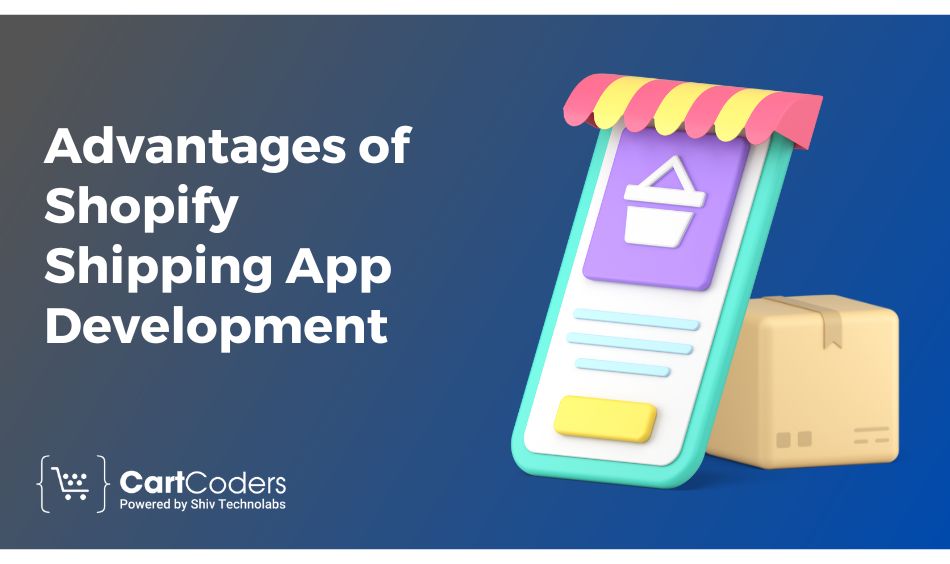Custom Engagement Solutions
Unlock tailored solutions with a free, no-obligation strategy session.
Expert Developers & Engineers on Demand
Scale Your Team with Skilled IT Professionals
Expert Guidance for Digital Transformation

Shopify has revolutionized the way businesses operate online, providing a robust platform for e-commerce success. However, managing shipping processes efficiently is crucial for maintaining customer satisfaction and operational effectiveness. Developing a custom Shopify shipping app can be the key to achieving this, but understanding the costs involved is essential for businesses planning to embark on this journey. In this detailed guide, we’ll break down the advantages of Shopify shipping app development, explore the cost stages and variations by country, and examine the factors that influence the overall development cost.

Creating a custom shipping app for Shopify brings several advantages to businesses looking to improve their e-commerce operations. Here’s a closer look at the benefits:
A custom shipping app allows businesses to create solutions that align perfectly with their unique needs. Whether it’s managing multiple carriers, offering real-time tracking, or automating label printing, the app can be designed to address specific requirements that off-the-shelf solutions might not cover.
Automating repetitive tasks such as calculating shipping rates, processing returns, and generating shipping labels can significantly reduce manual errors and save time. This efficiency translates to faster order processing, ultimately leading to improved customer satisfaction.
Providing customers with accurate shipping information, multiple delivery options, and real-time tracking can enhance the overall shopping experience. A well-developed shipping app can integrate seamlessly with Shopify to provide these features, making it easier for customers to choose their preferred shipping methods and stay informed about their orders.
While there is an initial investment in developing a custom shipping app, the long-term savings can be substantial. By optimizing shipping processes and reducing errors, businesses can lower operational costs and minimize losses from incorrect shipments or returns.
A custom shipping app can be designed to grow with your business. As your order volume increases, the app can handle more transactions without compromising performance. This scalability is crucial for businesses that anticipate growth or seasonal spikes in demand.

The cost of developing a Shopify shipping app varies based on the complexity of the project, the region where the development team is located, and the specific features required. Below is a detailed breakdown of costs, presented both stage-wise and country-wise, to provide a clear understanding of what to expect.
Each stage of development comes with its own set of costs. Here’s a description followed by a table summarizing these costs:
| Stage | Cost Range | Description |
| Planning and Research | $2,000 – $5,000 | Defining features, creating a roadmap, and researching integration requirements. |
| UI/UX Design | $3,000 – $8,000 | Designing user interface and experience, including wireframes and prototypes. |
| Core Development | $20,000 – $50,000 | Coding the app, integrating APIs, and ensuring Shopify compatibility. |
| Testing and Quality Assurance | $5,000 – $10,000 | Identifying and fixing bugs, optimizing performance across devices. |
| Deployment and Launch | $2,000 – $5,000 | Setting up the app on Shopify and configuring server environments. |
| Maintenance and Updates | $1,000 – $3,000/month | Regular updates, security patches, and ongoing support. |
The cost of development can also vary significantly depending on the location of the development team. Below is a description followed by a table summarizing the typical costs based on region:
| Region | Hourly Rate | Total Cost Range | Description |
| North America | $100 – $150 | $50,000 – $100,000 | Higher costs but offers proximity and high-quality work for local businesses. |
| Western Europe | $80 – $120 | $40,000 – $90,000 | Balances cost and quality with strong development standards. |
| Eastern Europe | $40 – $70 | $25,000 – $60,000 | Competitive rates with high-quality development, popular for outsourcing. |
| Asia | $20 – $50 | $15,000 – $40,000 | Lower costs with a large pool of talented developers; careful vetting required. |
| Latin America | $30 – $60 | $20,000 – $50,000 | Competitive rates with time zone compatibility for North American businesses. |
Several factors can influence the overall cost of developing a Shopify shipping app. Understanding these factors can help you better estimate your project’s budget and make informed decisions.
The more complex the app’s features, the higher the development cost. Basic features like calculating shipping rates or printing labels are relatively straightforward, while advanced functionalities such as real-time tracking, multi-carrier support, and automation require more development time and resources.
Integrating the shipping app with multiple carriers, third-party logistics providers, or custom APIs can add to the development cost. Each integration needs to be carefully implemented and tested to ensure smooth operation.
If the app requires a high degree of customization to match the business’s specific workflows or branding, this can increase the cost. Customization often involves additional design, development, and testing efforts.
The design of the app plays a significant role in user experience. A more complex design with custom UI elements, animations, or advanced user interactions will require more time and expertise, leading to higher costs.
As mentioned earlier, the location and expertise of the development team can significantly impact the cost. Teams with specialized skills or those located in higher-cost regions will charge more, but they may also deliver higher-quality work.
Tight deadlines can drive up costs as they may require the development team to work overtime or add more resources to the project. On the other hand, a more flexible timeline can help manage costs by allowing the team to work at a standard pace.
Ongoing support and maintenance are crucial for keeping the app up-to-date and secure. Some businesses opt for a one-time development cost, while others prefer a long-term partnership with their development team, which includes regular updates and support.
Developing a Shopify shipping app is an investment that can bring substantial benefits to your e-commerce business. By understanding the various cost factors and planning accordingly, you can create a custom solution that not only meets your needs but also provides a significant return on investment. Whether you choose to work with developers in North America, Europe, Asia, or Latin America, the key is to find a team that aligns with your budget and quality expectations. With the right approach, your Shopify shipping app can be a powerful tool that enhances your online store’s efficiency and customer satisfaction.
At CartCoders, we pride ourselves on being a leading Shopify Shipping app development company. Our expert team is dedicated to crafting custom shipping solutions that enhance your e-commerce operations and elevate your business. Trust CartCoders to deliver a shipping app that not only meets your needs but also drives success for your Shopify store. Let’s work together to create a powerful tool that makes a real impact.
Projects delivered in 15+ industries.
95% retention rate, building lasting partnerships.
Serving clients across 25+ countries.
60+ pros | 10+ years of experience.